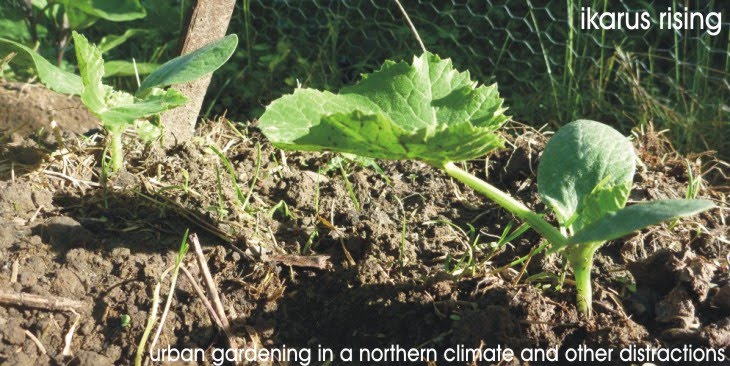Here is the data I took of the air temperature of the second shelf while the seedling heat mat was still in place.
The temperature and relative humidity measurements were made by the USB thermocouple every minute for almost two days. During this time, the timer for the light fixtures was set such that the lights were on from 6AM - 12AM each day. The heating from the lights is clearly evident in the graph. This shelf is directly above the shelf containing the electric heater, which was set to maintain 80F by periodically pulsing on and blowing hot air with its fan.
The average temperature during the daytime was 76F and at night with the light fixtures off was 73F. These temperatures themselves obviously aren't extreme, but considering that the second shelf also receives direct sun for most of the day on sunny days, and that the heat mat is supposed to raise the soil temperature 10-20F above the air temperature, I decided that the plants might be getting too warm. To solve this potential problem, I unplugged the heat mat. It doesn't seem to have had any adverse effects so far, and the new seeds I've planted have germinated just fine.
The large increases in relative humidity correspond to times when I watered the trays. Generally, it's better to have a more humid environment when seeds are germinating and then maintain the greenhouse slightly drier when growing plants so as to decrease the likelihood of rot, mold, or pests. The Greenhouse Gardener's Companion says that a relative humidity in the range of 45-60% is healthy for most plants, and that relative humidities greater than 80% foster rapid growth of leaf mold and other plant diseases and parasites.
Since I took these data, I've added vents to the sides of the greenhouse. I'm pretty sure the relative humidity since then has been much lower than that represented by this graph. I've placed trays of water on all three shelves to try to help raise the humidity (and also to act as a thermal mass at night), but I definitely think that I'm still losing more humid air out of the slits than I'm gaining through evaporation, which isn't really surprising. Most commercial and larger-scale greenhouses are able to vent air and maintain high relative humidities through the use of misting devices, but that's a little beyond the scope (and price range) of this first attempt at an indoor greenhouse.
Subscribe to:
Post Comments (Atom)






No comments:
Post a Comment